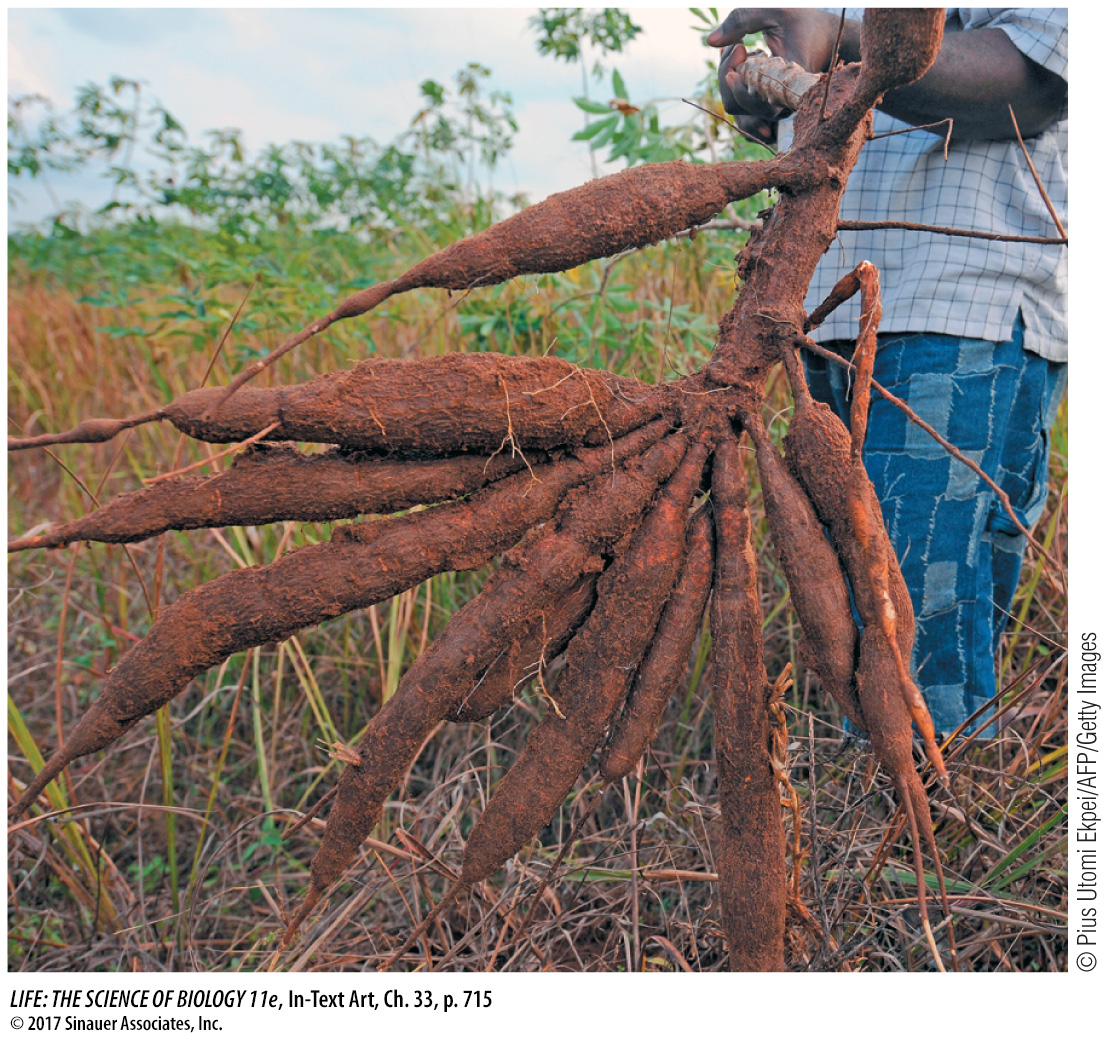Chapter Introduction
The Plant Body
PART EIGHT Flowering Plants: Form and Function

investigating life
Bread of the Tropics
To North Americans and Europeans, it is tapioca. To Central and South Americans, it is yuca. To Africans, it is manioc or bananku. The roots of the cassava plant, Manihot esculenta, are important in the diets of more than 800 million people. Cassava is grown mostly by family farmers for their own consumption. The root of the plant is a store of starch, which can be hydrolyzed and used by the plant as the stems and leaves grow. Other crop plants such as rice and wheat apportion about 35 percent of the total carbon fixed in photosynthesis into their storage organs (the grains), whereas cassava apportions an astounding 80 percent into the root, as starch. For humans, this is a convenient and concentrated source of food energy. Indeed, cassava has been nicknamed the “bread of the tropics” because, just as wheat bread is the major starchy food in the Western world, cassava supplies the starch in tropical areas.

Most cassava plants are clones. The plants have wide adaptability and grow well in dry soils, in both hot and cool climates. Typically, the farmer breaks off some pieces of stem and plants them. Because most plant cells are totipotent (see Key Concept 19.1), some of the stem cells dedifferentiate and form roots, while others become growing shoots. A whole new plant develops, and the roots are ready to eat 6 months to 2 years later.
There are countless recipes for preparing cassava as food, but it is nutritionally incomplete. Although rich in carbohydrates, cassava is a relatively poor source of protein, a requirement for the human diet. Eating cassava presents other difficulties. Cassava roots and leaves contain cyanogenic compounds, which are converted to cyanide by enzymes released when the cells are broken open. Cyanide is highly toxic and potentially lethal because it blocks electron transport in the mitochondria. Therefore it is essential to soak, cook, or ferment cassava, to break down the cyanogenic compounds and eliminate the cyanide, before it can be eaten safely. In all probability, the plant uses cyanide production as a protection against predators that eat it.
We open with the topic of cassava because it offers a preview of a wide range of studies embraced by the discipline of plant physiology. Plant physiology is a broad subject, covering photosynthesis, transport, plant nutrition, regulation of growth and development, reproduction, and the interactions between plants and their environments.
How might plant biologists improve the cassava plant for human use?